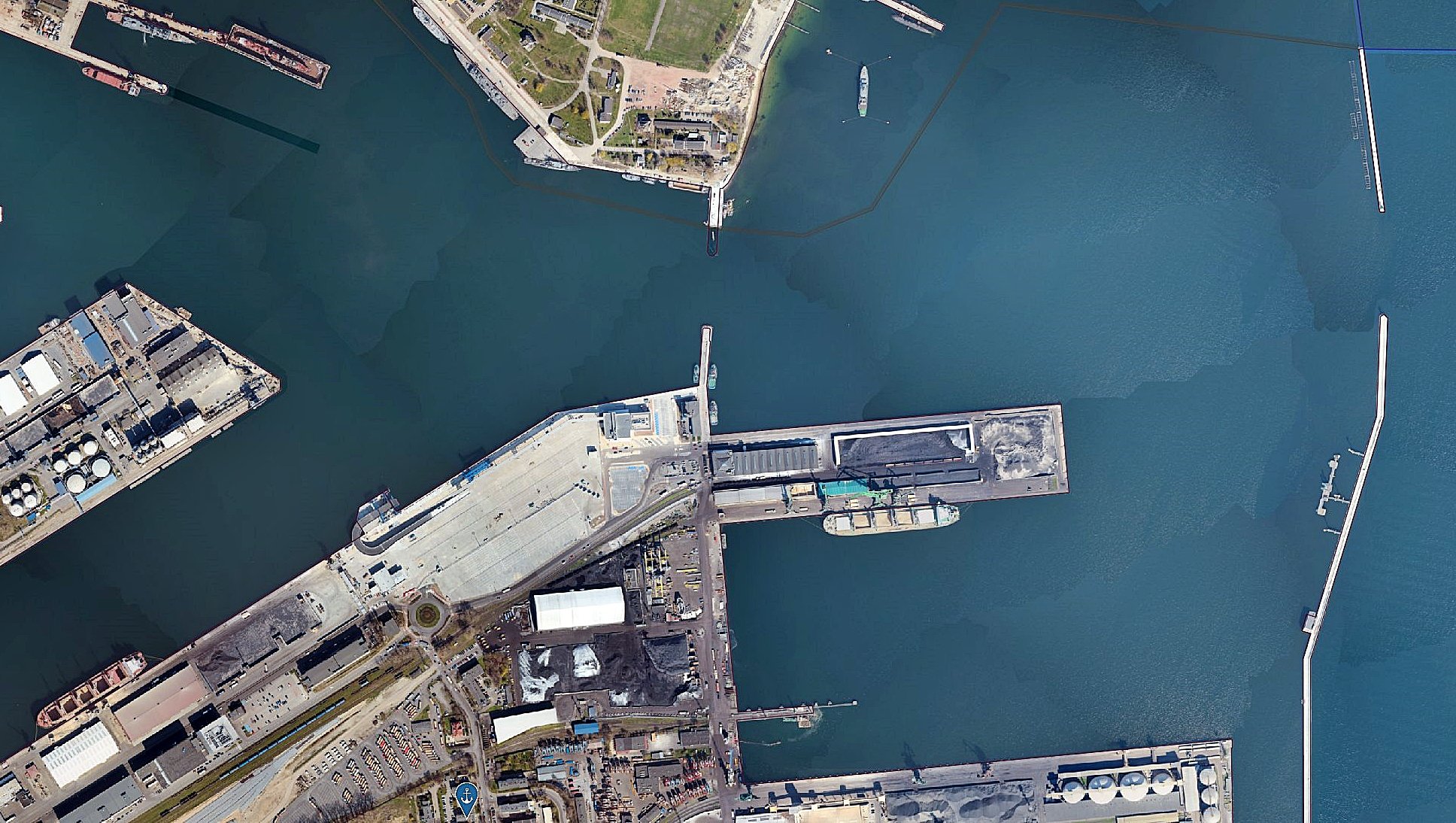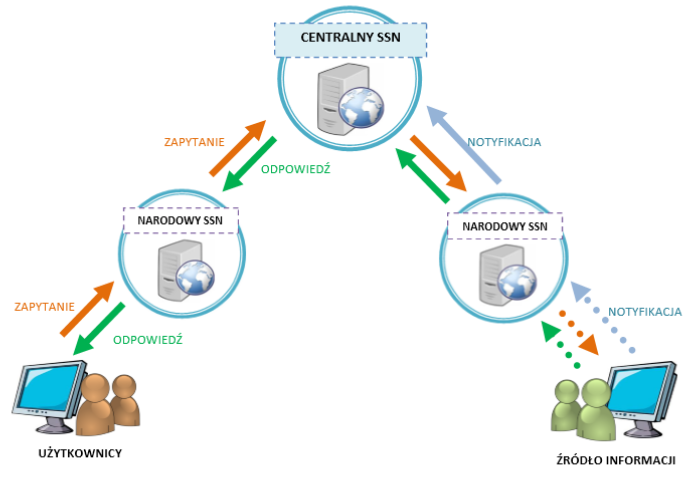
Maritime Traffic Safety Department
SafeSeaNet
SafeSeaNet - EN
Exchange of information
At sea, information has an immeasurable value in terms of safety and security. Obtaining information in the right place and time means a saved human life, property or an ecological catastrophe averted. The transport of dangerous goods and passengers poses particular threats. These aspects of human activities at sea should be subject to special restrictions designed to prevent the occurrence of extreme situations or to mitigate the spread of the effects of such activities.
The development of modern technology, the possibility to collect and transmit information using computer networks, wireless communication systems and the ability to determine the vessel's position continuously from satellite navigation systems - makes it possible to relieve the captain of the need to complete relevant information on board the vessel. It turned out that most of this data can be collected before the vessel leaves the port and, without the vessel's involvement, can be transferred to all centers coordinating rescue operations along her voyage, as well as to the ports to which the vessel is heading.
These are the goals to be achieved that were taken into account when drafting Directive 2002/59 / EC. This directive, also implemented in Polish legislation, became the motive for the creation of the European network for sending information about vessels navigating in the waters of the European Community - SafeSeaNet.
Description of the functioning of the National SafeSeaNet (NSSN)
Shipping Safety Information Exchange System (SWIBŻ) - a component of the National SafeSeaNet System.
This system was created by the Maritime Office in Gdynia in connection with the technical implementation of the provisions of Directive 2002/59/EC of the European Parliament and of the Council of 27 June 2002 on the establishment of a Community vessel traffic monitoring and information system repealing Council Directive 93/75/EEC becoming part of the National SafeSeaNet (NSSN).
SWIBŻ, as a system, is divided into two components, applications - map and internet.
The internet part, is used to exchange information between users of the SWIBŻ system and to communicate with the Central SafeSeaNet System (notifications, incidents, inquiries).
SWIBŻ as the central application of the National SafeSeaNet performs the following functions:
- Presentation of all data from available sources (VTS, VTMS, VMS, radars, AIS-PL, hydro meteo, RDF, vessel databases, etc.);
- Presenting data from external AIS systems (HELCOM, EMSA, NATO);
- Exchange and presentation of data from SSN;
- Risk assessment;
- Supporting crisis management and information exchange;
- Presentation of data from the control and information system for Polish ports - National Single Window (NSW).
The information exchange in the SSN system is based on the EIS - European Index Server, a network for communicating with users, handling their inquiries and sending answers from other sources. All inquiries and responses are encrypted, and thus - safe.
1. The data provider submits it to the SSN National System, where the PortPlus notification (a collection of the most important data on the vessel's voyage) is created and sent to the Central SSN. Central SSN stores and records each notification with a unique ShipCallId number.
2. SSN users have the option to query a specific vessel / trip using the National SSN. The inquiry is directed to the Central System, which then directs it to the appropriate National SSN, and when it receives a response in the form of a data message, forwards it to the user who issued the inquiry. The entire procedure takes less than 2 minutes.
The diagram of information exchange between the different National SSN of the Member States is presented in the figure below.

Fig. 1. Information flow in the SSN system (terms translated: Użytkownicy = Users; Zapytanie = Inquiry; odpowiedź = Response; Narodowy SSN = National SSN; Centralny SSN = Central SSN; Notyfikacja = Notification; Źródło Informacji = the Data Provider)
The information sent via the SSN system includes, among others:
- Vessel’s data;
- Travel data;
- HAZMAT notifications - data on dangerous goods;
- WASTE notifications - Waste data;
- SECURITY notifications - Vessel security data;
- BUNKERS notifications – quantity of fuel on board the vessel;
- Marine incident data;
- MRS reports (mandatory reporting system).
Based on Article. 91 of the Maritime Safety Act of 18 August 2011, the National System of Vessel Movement Monitoring and Transmission of Information was established, called the National SafeSeaNet System ”. Pursuant to the Regulation of the Minister of Transport, Construction and Maritime Economy of 4 December 2012 on the National System of Ship Traffic Monitoring and Information Transmission, the National SSN system consists of:
1.Technical infrastructure, divided into two subsystems:
- Vessel traffic monitoring subsystem, consisting of:
- short and long range shore radars,
- the shore stations of the Automatic Identification System (AIS),
- the Long Range Identification and Tracking System (LRIT);
- the information transmission subsystem, consisting of:
- control and information system for Polish ports - National Single Window (NSW)
- Shipping Safety Information Exchange System (SWIBŻ).
2.SafeSeaNet Coordinator, whose role is:
- Exchange information with European Union SafeSeaNet users;
- Immediate exchange of information with national system users;
- Coordinating the flow of information between individual users;
- Responsibility to the minister responsible for maritime economy;
3. National SafeSeaNet users.
Duty Service of the National SSN Coordinator (NCA 24/7 Poland):
Phone: +48 58 355 3617;
Fax: +48 58 620 53 63; or +48 58 620 53 28;
Email: nca@umgdy.gov.pl
Downloads
-
AuthorMichał Tomczyk
-
Creation date11 March 2022
-
Modified1 April 2022 by Michał Tomczyk
